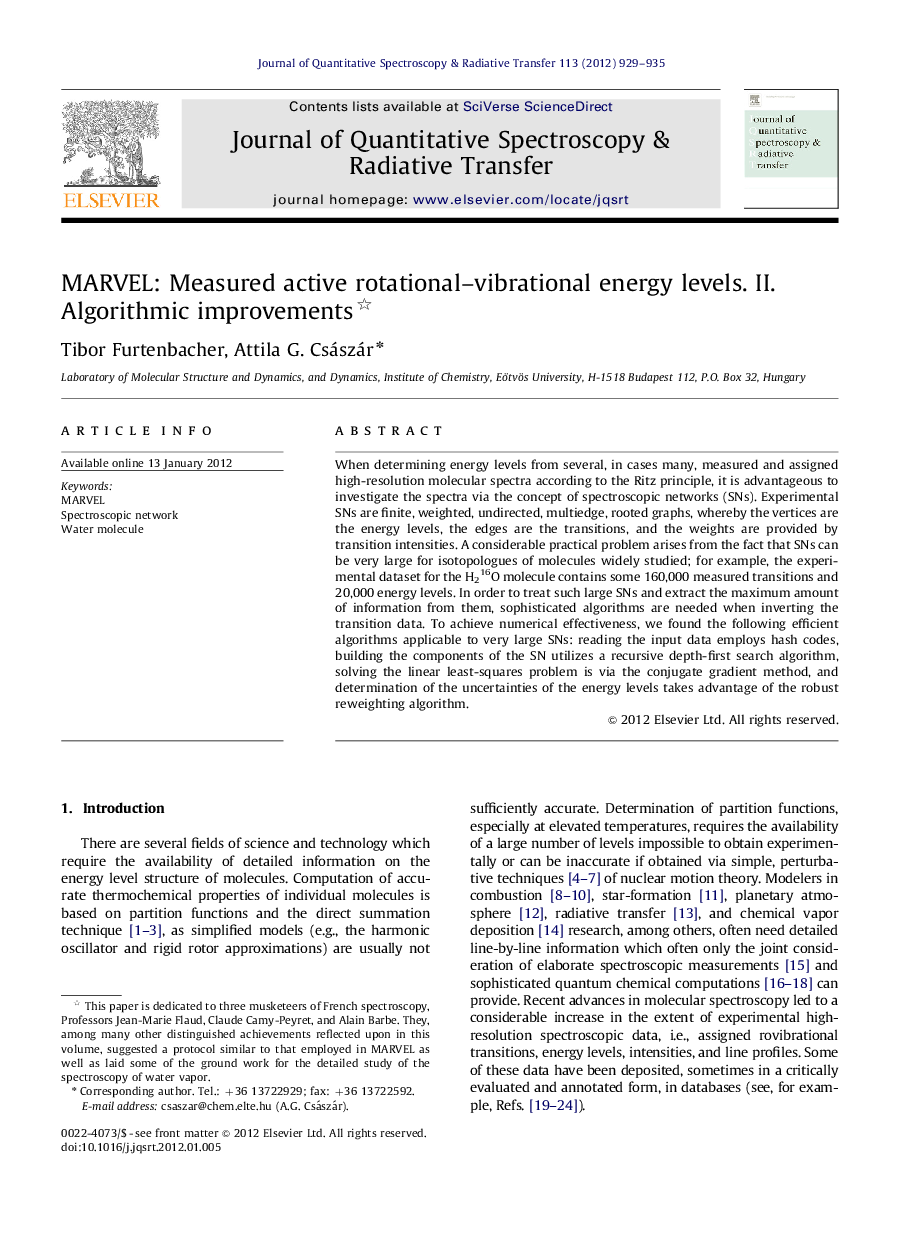| Article ID | Journal | Published Year | Pages | File Type |
|---|---|---|---|---|
| 5429150 | Journal of Quantitative Spectroscopy and Radiative Transfer | 2012 | 7 Pages |
When determining energy levels from several, in cases many, measured and assigned high-resolution molecular spectra according to the Ritz principle, it is advantageous to investigate the spectra via the concept of spectroscopic networks (SNs). Experimental SNs are finite, weighted, undirected, multiedge, rooted graphs, whereby the vertices are the energy levels, the edges are the transitions, and the weights are provided by transition intensities. A considerable practical problem arises from the fact that SNs can be very large for isotopologues of molecules widely studied; for example, the experimental dataset for the H2Â 16O molecule contains some 160,000 measured transitions and 20,000 energy levels. In order to treat such large SNs and extract the maximum amount of information from them, sophisticated algorithms are needed when inverting the transition data. To achieve numerical effectiveness, we found the following efficient algorithms applicable to very large SNs: reading the input data employs hash codes, building the components of the SN utilizes a recursive depth-first search algorithm, solving the linear least-squares problem is via the conjugate gradient method, and determination of the uncertainties of the energy levels takes advantage of the robust reweighting algorithm.
⺠Efficient numerical algorithms are developed for each stage of a MARVEL analysis. ⺠Algorithmic improvements allow treatment of very large spectroscopic networks. ⺠MARVEL yields energy levels and associated uncertainties consistent with the input data.
